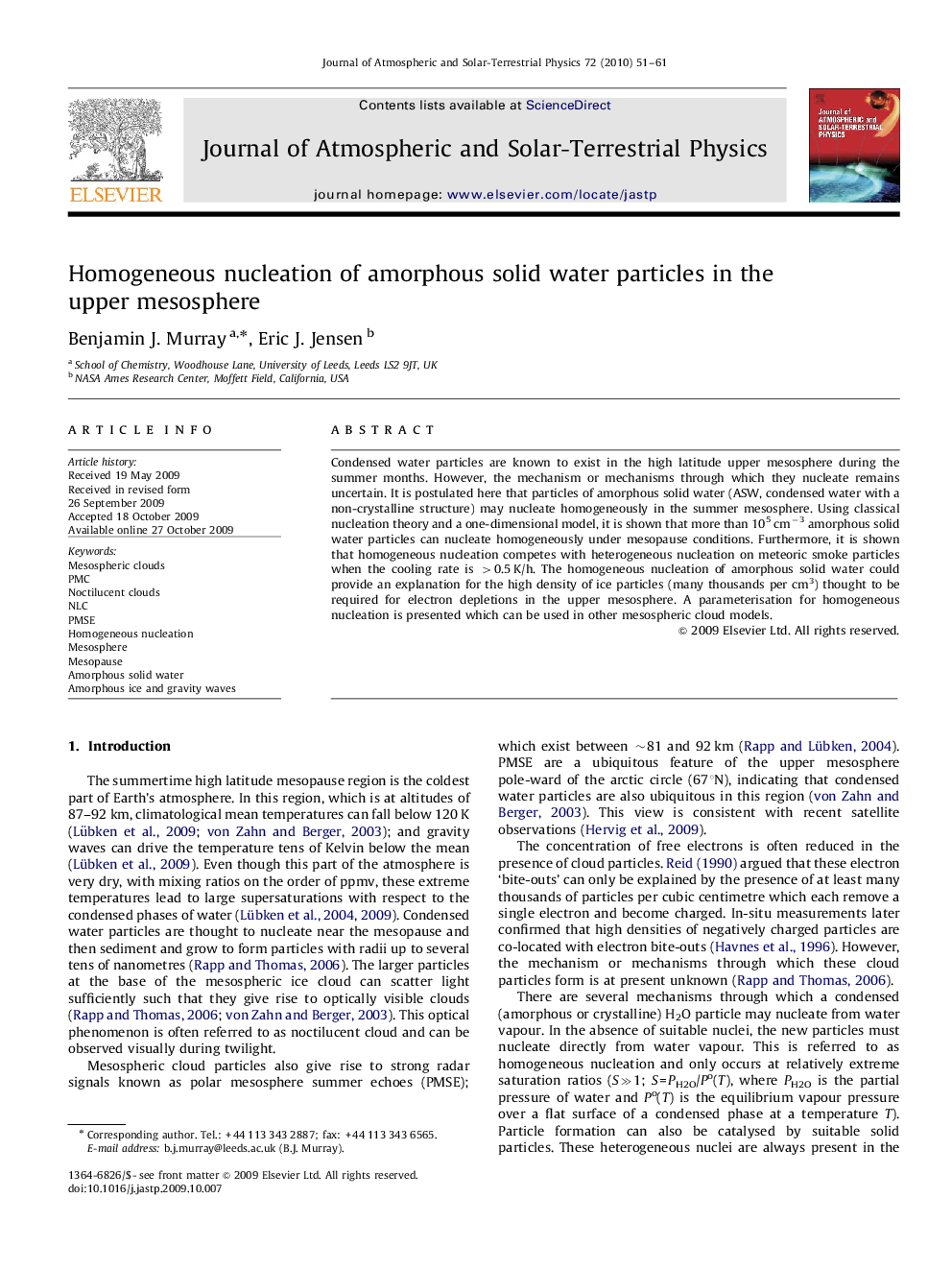| Article ID | Journal | Published Year | Pages | File Type |
|---|---|---|---|---|
| 1777400 | Journal of Atmospheric and Solar-Terrestrial Physics | 2010 | 11 Pages |
Abstract
Condensed water particles are known to exist in the high latitude upper mesosphere during the summer months. However, the mechanism or mechanisms through which they nucleate remains uncertain. It is postulated here that particles of amorphous solid water (ASW, condensed water with a non-crystalline structure) may nucleate homogeneously in the summer mesosphere. Using classical nucleation theory and a one-dimensional model, it is shown that more than 105Â cmâ3 amorphous solid water particles can nucleate homogeneously under mesopause conditions. Furthermore, it is shown that homogeneous nucleation competes with heterogeneous nucleation on meteoric smoke particles when the cooling rate is >0.5Â K/h. The homogeneous nucleation of amorphous solid water could provide an explanation for the high density of ice particles (many thousands per cm3) thought to be required for electron depletions in the upper mesosphere. A parameterisation for homogeneous nucleation is presented which can be used in other mesospheric cloud models.
Related Topics
Physical Sciences and Engineering
Earth and Planetary Sciences
Geophysics
Authors
Benjamin J. Murray, Eric J. Jensen,
